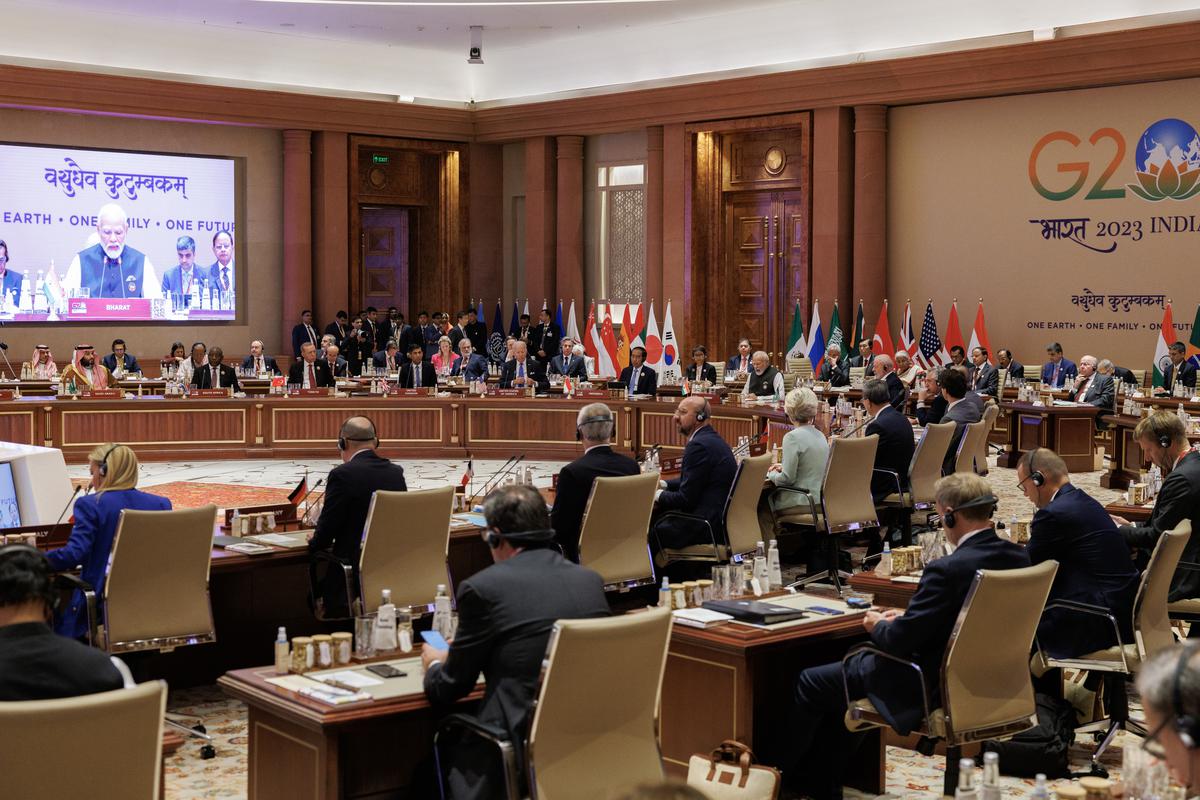India At the G-20 Summit, she shines and champions multilateralism and multipolarity.

The main idea
The recent G-20 conference in India, particularly the New Delhi Leaders’ Declaration (NDLD), has reiterated the global importance of multilateralism. Despite hurdles, India’s diplomatic efforts at the summit bore results based on its values of multilateralism, multipolarity, and the middle way.
“In a world that often resembles a dysfunctional global family, India’s diplomatic approach at the G-20 serves as a beacon of hope for effective global governance.” UN Secretary-General António Guterres
Multilateralism: The Key Driver
Concessions for Consensus:
- The promise to defend multilateralism was critical in reaching agreement at the G-20. The Western group, which includes the G-7, the European Union, and allies such as Australia and South Korea, made substantial concessions by agreeing to remove clear references to Russia from paragraphs dealing with the Ukraine war.
- The united goal of retaining the G-20 as an important venue for global collaboration drove this collaborative approach.
Preservation of the G-20:
- The absence of a common declaration would have called the G-20’s survival into question, potentially leading to its disintegration into various blocs such as the G-7 and BRICS.
- The G-7 and the BRICS have already stated their opinions on the Ukraine crisis. As a result, the G-20’s relevance as a forum integrating multiple opinions was reinforced.
The Role of Developing Countries:
- The Troika-Plus, which includes Indonesia, India, Brazil, and South Africa, all of whom are hosting or will host the G-20, was critical in developing a winning solution to the Ukraine issue.
- This underlined rising economies’ multilateral clout and their contribution to consensus-building.
Support for a Multipolar World from India
India’s Advocacy:
- At the G-20, India’s unwavering support for a multipolar international order stood clear. In a world where the United States sought unipolarity, China sought bipolarity, and India advocated for multipolarity, India’s position gained significance.
Global Shifts:
- During the Trump period, the United States temporarily withdrew from many multilateral accords and organisations, raising concerns about a potential loss in U.S. global leadership.
- Because of its actions during the COVID-19 epidemic and aggressive behaviour towards neighbouring countries, notably India, China’s rapid rise brought both influence and anxiety.
The Rise of the Global South:
- The Global South, which includes over 125 countries, has emerged as a powerful voice in global politics. Regardless of income differences, the Global South’s cumulative impact has transformed global objectives in areas such as development, climate change, health, and internet access.
- India’s significant engagement with the Global South, including membership in the African Union, has strengthened its position at the G-20.
The Middle Path: A Strategy for Indian Diplomatic Success
India’s Tradition:
- India’s diplomatic performance at the G-20 might be linked to its long-standing policy of avoiding alliances and seeking a middle ground in global conflicts.
- This approach sometimes necessitates making concessions, such as keeping links with Russia and declining to invite Ukraine’s president to speak at the G-20.
- It does, however, present India as a link between the Global South and the North, East and West.
- A Juggling Act: Bridging differences is an essential duty in a polarised environment. India’s capacity to strike a balance between competing interests makes it a key global mediator and consensus builder.
@the end
The G-20 meeting in India demonstrated the pervasiveness of multilateralism, multipolarity, and the middle path in diplomacy. The achievement of India in generating consensus and maintaining G-20 unity emphasises the importance of these principles in addressing global concerns.
Source: https://pib.gov.in/PressReleaseIframePage.aspx?PRID=1955530
